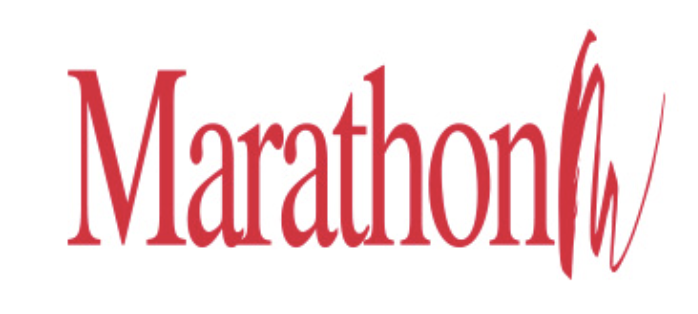|
by Skip Cohen
It's a new year, and what everyone thinks of as the "slow season" is over. With Mother's Day, graduations, proms, and Father's Day all just around the corner, Spring seasonality is in full swing. But today's post isn't about seasonality but the diversity of your skill set. For those of you who are struggling as one-trick ponies – it might be time to diversify. Having a primary specialty is excellent, but it's time to grow if that's all you can photograph confidently. Think back to the height of the pandemic – when events were all canceled, people were paranoid about virtually everything – and we all hunkered down. Now, think about your plans if another crisis were to happen, even the most localized event that forced you to change your business model. If you who think I'm being an alarmist - forget about any crisis and just think about how you're going to increase your customer base and revenue. How will you grow your business and, at the same time, insulate yourself from some of the more critical outside challenges? Do you have the skill set to tackle other imaging applications? Here's an excellent example for wedding photographers: Let's assume you photograph nothing but weddings. Sadly, you're missing other opportunities. There are all kinds of statistics about when couples start families. That means, depending on the age of the brides you've photographed, there's a strong potential for maternity and newborn photography in the future. And babies become children, and that opens new doors for family portraiture. Families get pets, which opens another opportunity for pet photography. If you hate the idea of diversity to other genres, then build a relationship with another photographer or two who specialize in subjects you don't. For example, if you hate the idea of maternity and newborn photography, then align yourself with an artist who specializes in those two categories. Build a referral business where you support each other. While the major first-quarter conventions have passed, there are still opportunities for you to grow and diversify. From conferences like ClickCon in late July to educators who teach privately and online programming, there's so much available in every genre. Take the time to take a few classes outside your core specialty. Your goal is to never say, "I'm sorry, I don't do that kind of photography," but to always have a solution for potential clients who contact you. So, if you don't have the skills, the next best thing is to offer a referral to an artist who does. Remember, growth only happens outside your comfort zone.
0 Comments
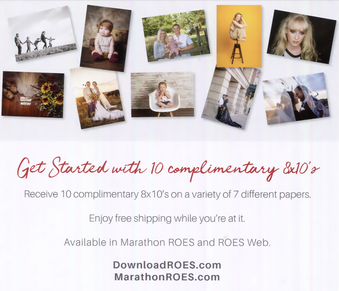 Click to register for 10 complimentary 8x10s Click to register for 10 complimentary 8x10s by Skip Cohen Typically, timing is everything, and while it's pushing the envelope for a three-part mailing for Spring seasonality, it's NEVER too late to plant the seed for later in the year. You're all looking for ways to make your business stand out in the community. Competition is fierce, so how can you cut through the noise and attract attention to your role as an artist and the ultimate storyteller? Marathon's Power of 3 marketing for families is a simple and cost-effective way to market to families in your area. Plus, there's ZIP code protection available on the design on a first-come, first-served basis! And if that isn't enough, you've got a starter kit to test drive Marathon's Bella prints with ten complimentary 8x10s! Just click on the banner to the right. I know today's post is an infomercial, but it's for a company I so respect and have worked with for over thirty years. Here's my point: You've worked hard to raise the bar on your skill set and grow your business. But nothing happens without marketing and building relationships with your target audience. Today, you have more tools for capture, post-production, and reach than at any time in the 200+ year history of photography. What good is creating outstanding imaging and establishing yourself as the leading storyteller in the community if people don't know who you are? Direct mail is back with a vengeance and can help you get through the noise and plant ideas for photography with your targeted clients! Marathon's making it so easy - even giving you an opportunity to see the quality of their marketing material and the finished Bella prints! Don't take my word for it - go ahead and call Marathon to find out more at 800-228-0629 or visit their website. If you don't design your own life plan, chances are you'll fall into someone else's plan. And guess what they have planned for you? Not much! Jim Rohn  Click to learn more Click to learn more by Skip Cohen It's Marketing Monday, and I saw the quote above and loved it. It makes the point about planning, although I'm going to scale it down a little. It's April 1, and so many artists are still procrastinating about going after spring seasonality. Except for wedding photographers, most of you only have two major stretches of seasonality—the spring and the fall/winter holidays. There's so much you can be doing RIGHT NOW!
Regardless of which events seem to best fit your expertise, there are opportunities for joint mailings and sponsorship. The cost of a direct mail piece drops to 1/3 with just two partners. And remember, pet photography—it's number three in the hierarchy of why people hire a professional photographer! According to Forbes, 66% of US Households have a pet—that's approximately 87 million homes! Here's my point today - procrastination is not a strategy, although we all know people who have made it a skill set! Stop pondering and start taking action. If you don't build your dream someone else will hire you to help build theirs.
Tony Gaskins Customers don’t want to wait. Specifically, they don’t want you to waste their time. If you do make them wait, you risk losing them. Making your customers wait sends the message that you don’t respect them or their time. Shep Hyken by Skip Cohen
One of your best marketing tools for building your business is responding quickly to customer requests. There's no such thing as getting back to a client too soon, and response time is even more important when it's with a potential customer! Here's a great example with two different consumer companies: I called the company that fertilizes our lawn and landscaping. I wanted somebody to come to the house and explain why they don't seem to be doing as good a job as in the past. After two weeks and multiple phone calls, I never heard back, so I went in search of a new company. Around the same time, I contacted our "pest" company, which regularly sprays for roaches, fire ants, etc., which is part of the challenge of living in Florida. All I wanted was an estimated price for mosquito control. It was no big deal; just a ballpark price. They wouldn't do it over the phone and needed to send a manager out to review my property—even though we've been with them for at least ten years at two different homes! There are two issues here:
Here's my point: Years ago, I had a friend who was a residential realtor in Las Vegas; whenever he didn't get the listing, he always made it a point to contact the client and ask why. He always did it in a thoroughly kind and gracious way, "It was great to meet you, and I'm hoping you're comfortable sharing why you didn't choose us. We're always working to improve our business, and if we're missing something, your feedback will help us with future contacts." That's paraphrasing what he'd ask, but close enough to make my point. A big part of the strength of your brand is built on integrity, trust, and good communication. Respond quickly to customer questions. And when you lose a job, don't be afraid to ask what was missing. Everyone knows their strengths—the challenge is understanding and building up your weaknesses! I am a part of all that I have met. Alfred Lord Tennyson by Skip Cohen I've used the quote above a lot, but usually when talking about somebody who's been a major influence in our lives, and has become a part of us. Well, this is a similar reference, but in this case, it applies to things that influence our creativity—ideas that come from everyday products and events in our lives. The year is 2006, and George Varanakis, then VP of Sales for Rangefinder Publishing, had an idea. He came into my office at Rangefinder and simply said, "Why couldn't we do this?" He held up a copy of Men's Health, which had been paginated in two directions. Reading it one way was Men's Health, and turning it over was a different magazine about fitness. At that point, Rangefinder Magazine was one of the biggest and most respected magazines in photography, but George was always looking for ways for it to grow more. George and I went to talk about it with Bill Hurter, who is, still to this day, one of the very finest editors to have ever been in photography. He passed away many years ago, but his influence is still around, and he was brilliant. We brainstormed for a while, came up with a name, and then pitched it to RF's owner, who was less than thrilled. But we persisted---there is no expiration date on great ideas! At Photo East that year, George and I pitched it to all the major suppliers, most of whom were already advertisers in RF and exhibitors at WPPI. We put together a slide presentation, locked in a conference room at Javits, and scheduled meetings every 30-60 minutes for three days. The response was overwhelming with enough advertisers to make After Capture a reality. The first issue featured a fun image of Lynn Goldsmith's. That's her face on the mannequin on the right above. If you don't know who Lynn is, it's time for her to be on your radar. She recently won a landmark case that went to the Supreme Court on copyright against the Andy Warhol Foundation. Below are two more of my favorite covers! While this could easily have been a Throwback Thursday post, there's a more important point I wanted to make.
We're surrounded by great ideas in other applications every day. So often it takes another pair of eyes to recognize the potential. With AfterCapture, George V. had a vision and as a team, it became a reality. RF would evolve into everything that went into capturing an image, while AC would cover whatever was done after the shutter was clicked. Besides being a great friend for all these years, George is one of the most creative marketing managers in the industry, but here's one more thing to think about. Each of you have friends who see the world a little differently than you do. You also have a network of friends and associates who can help you through the day-in-day-out challenges. They can also help you step into the future...but they can't do anything if you insist on flying solo. Share your ideas for the future, your goals and your aspirations with a few of those people you trust the most. That old line about it takes a village, couldn't be more appropriate to running your business and being successful. And to George...thanks buddy. Finding these covers brings back so many great ideas that came out of those early days at RF/WPPI. by Skip Cohen Growing your business is no different than caring for a plant. It needs water, sunlight, the right temperature, and nutrients regularly to grow. Your business needs the same attention with new products, communication to your subjects, a great skill set, demonstrated trust with clients, and everything needs to be "seasoned" with your enthusiasm and love for the craft. Today's post is about just one aspect of growing your business—diversity in your product line. If we've learned nothing else from McDonalds, creating added value should be at the very top of your list. There's no way to initially order just a burger. We're all used to the pitch, whether it's fries, a drink, or a combo meal, and most of the time, we always ramp up our order. Even at the supermarket, we're trained to look for added value. We may not always save money, but we always get more bang for our buck. Knowing that, why are there still so many of you who sell the minimum? Why is what you're offering the same as it was last year and the year before? Would the products/services you offer put a rock to sleep? Most of you, if a potential client calls or writes to ask how much something is, are going to answer without any additional pitch. Think about this for a second—you've already got the customer on the phone or in an email, and they've asked you for the cost of something. They already have an interest; otherwise, they wouldn't have contacted you. You've got the "fish on the line," so why not set the hook? If my using that expression bothers you, then it's time for you to step out of this business and consider whether photography is really your business or a hobby!
Suzette Allen's video below is seven years old. It was done in celebration of the client's tenth anniversary, but there is no expiration date on good ideas! This is not a new concept, but so many of you miss the opportunity.
Look for added value and do your best to stay away from making price the issue. I've only hit the tip of the iceberg in products/services you can offer your clients. You need to develop a plan so that you can be proactive instead of reactive! This is March 20, and Easter, Mother's Day, graduation, and Father's Day should all be on your radar! Having a plan in place and gradually adding new services and products can help you focus your marketing energy on finding new clients instead of being reactionary to every client who wants to know if you'll drop your prices! Remember one key issue - the entire discussion on added value is a moot point if your skill set as a photographer sucks! You've got to have a skill set better than Uncle Harry's. You've got to exceed client expectations and make yourself habit-forming. Anyone can get their first customer—the key is to get those first clients to not only come back but also tell their friends! "The best advertising you can have is a loyal customer spreading the word about how incredible your business is.” Shep Hyken 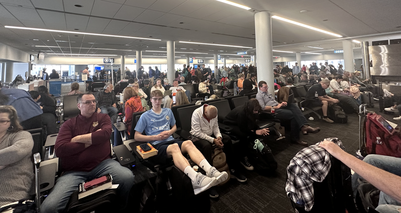 Sitting through a 4-hour delay Sitting through a 4-hour delay by Skip Cohen I try to keep Friday posts short. Today's post is more of a reminder of what every small business owner's mantra should be: exceed expectations and make yourself habit-forming! Thinking about 2024 and the challenges we all face for the new year, I couldn't be more optimistic. It won't be an easy year, but I'm hearing so many great stories about business picking up around the country. Well, I started thinking about the role Customer Service will play in the months ahead. It's simple—your success is about going the extra steps you take and staying in touch with your clients, even when you don't have to. It's also about keeping your promises, never compromising on the quality of your images, and creating a brand/reputation known for integrity. Coming back from Cleveland just a few days ago, we got stuck in Charlotte for hours due to bad weather in Florida. The delay had absolutely nothing to do with American Airlines directly - just storms. But here's where American missed the boat - their computer wasn't synchronized with the announcement information they were sharing. Every 30 minutes, the departure monitor updated to a new time—and it was always wrong. That put the gate agents in the position of announcing the real-time data they had received. But with each update on the monitors, we'd get excited, thinking we were finally going to take off! To add to the pain, the gate agents shared an update every 15 minutes, reminding everybody our departure time was in "God's hands, not theirs." Here's my point: Be honest with your promises. Then, deliver what you promised and more if you can. Building trust is about great communication and follow-through. Done right, working with you will become habit-forming. To paraphrase two of the industry's finest portrait artists, Tim and Beverly Walden, "It's all about creating an experience, not just the finished product!" As we head into Spring, now is the perfect time to keep in touch with your clients and your audience. It's about giving back, being helpful, and growing your strongest marketing tool: relationship building! Excellent Customer Service isn't just about solving problems. It's about being proactive and creating top-of-mind-awareness with your audience - so whenever they think about photography, your name is right on top. It's about going beyond the customer's expectations. There are no traffic jams along the extra mile.
Roger Staubach  My Senior Headshot My Senior Headshot by Skip Cohen It's graduation season, and I'm always amazed by what kids graduating today have for their senior portrait versus when I was a kid. (This is where Scott Bourne would make a crack about Matthew Brady doing my senior shot!) Every senior headshot was the same: black and white and boring. There was no capture of anyone's personality, and it was not something you'd share except with wallet-size photos. But the excitement of graduating and starting a new chapter in your life was the same. Well, today, whether you're a full-time senior photographer or portrait artist, graduation season is a time for creativity and exceeding client expectations. To start, think about what kids have gone through to make it to graduation today. They all had to deal with the pandemic, worrying or more tragically dealing with school shootings, politics, and simply watching the world run amuck! Graduation becomes even more special and a time of pride and celebration. Yes, I'm essentially doing a post that's an infomercial, but if you've followed my blog over the years, I don't share anything that doesn't make sense to help you grow your business or your skill set. If you're hoping to go after the senior market and beyond to graduation, then let's get you the very best products. I'm a big fan of grad cards, and Marathon's offering them on a BOGO program right now, with half off. That gives you an advantage in decreasing costs and increasing margins. And you've got so much to choose from. When you click on the banner below, you can check out the program for yourself. There are 64 different basic templates, and within each collection, tools to enhance your creativity abound! I've included a screenshot of the first twelve below. Here's my point - everyone is looking for ways to grow their business and increase revenue. Grad cards are a way to produce something special and secure your role in helping students and families celebrate what's typically the first major achievement of so many of today's kids. Check out Marathon's program with a click on the banner below! Basic Templates for Grad Cards
(There are 52 more!) 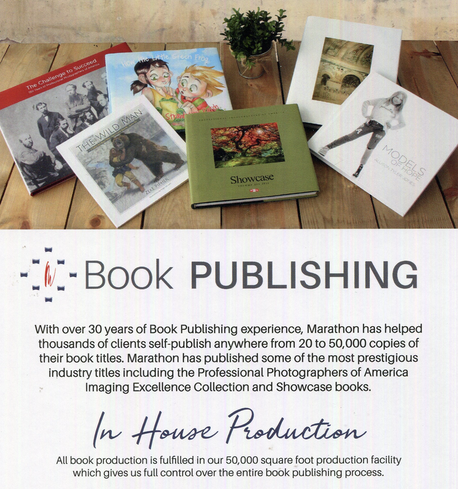 by Skip Cohen Last week I shared a post and video about Marathon's Bella Album line. At a time when everybody is working hard to make their work unique and create excitement with their clients, it's a perfect solution to exceeding expectations. Well, here's one more: book publishing. Again, you're looking to set yourself apart from your competitors with presentations that are different. I'm a big fan of books, whether one-of-a-kind or dozens of copies. I've done several over the years for my wife and each time they exceeded expectations. One of the skills most of you possess is storytelling. Creating a book in my opinion has so much more impact than just an album. You can add copy, create a unique layout, and design a cover that makes your publication look like it's off the shelf at Barnes & Noble. Here's one more benefit - we're a word of mouth industry. Think about the impact a personalized book will have on a client. Now, think about how many people a happy client is going to show their book to. And a book is perfect as a fundraiser for a nonprofit. Many of you are involved with various charities who are always looking for unique ways to raise money and awareness. I'm thinking of community non-profits, pet adoption centers, and events that deserve to have their story told by a professional storyteller. This is a product that has huge potential to help establish your reputation as a leader in your community. You're not just another vendor, but a master in storytelling! "Leadership is the capacity to translate a vision into reality." Warren Bennis. ...or call Marathon at 800-228-0629!
Service to others is the rent you pay for your room here on earth! Muhammad Ali by Skip Cohen February is about to close, giving you only a month to build a stronger foundation for the new year. And with Easter coming early this year, you really have even less time. This is the sixth installment in this year's building block series. It's also the easiest for you to accomplish: Community Involvement. You're looking for the community to be good to you, so you better make damn sure you're good to your community! From local nonprofits to national programs, it doesn't matter if they're photo-centric or not. You're looking for things you can do to help, with or without a camera in your hands. Here's one that's national, involves your photographic skills, and carries with it a huge client responsibility. But it's an even bigger payback when it comes to tugging on your heartstrings - Now I Lay Me Down To Sleep. I'm a big fan of the support they provide to families when they need help the most. And while some of you may think it's too gut-wrenching or morbid to photograph a dying child, read this post. I shared it many years ago, but there's no expiration date on making a difference in people's lives. It's still one of my favorite posts on the topic. "I've never heard a thank you that left me so sad, and yet so proud. I walked out knowing that the images I had taken weren't just pictures - they were someone's memories. They mattered." Cyd Lapour, NILMDTS Volunteer My point is about giving back - at any level. NILMDTS is a wonderful organization, but there's no such thing as an effort too small. From teaching a community class on how to get better photography to working with the local high school on a better yearbook, there's something or someone in your community who needs help. Even easier, being involved in your community in some way doesn't have to involve photography; it just takes a little effort and your time.
Use social media to raise awareness with posts about the need for volunteers and support for various community groups. Share a community calendar about upcoming nonprofit events. Attend various fund-raisers, capture images and then share them in social media. Be a leader in giving back! I'm so surprised by the number of people who do so little and think that a donation to a particular charity once a year is enough. When put on the spot, they'll respond with something about how they're still looking for the right charity. You're not buying a car, just getting involved in helping people! Remember, people like buying products and services from companies they perceive as giving back to the community. You're looking for the community to be good to you - so you better make sure you're being good to your community! by Skip Cohen
Usually, this is the kind of post I'd share for a Sunday Morning Reflections piece, but recently, I've noticed how many photographers would rather follow someone else's lead than blaze their own path. Even with the slightest change in how they capture an image, they're not comfortable trying something new. Cyndie Spiegel in her book, A year of Positive Thinking, put it all in perspective... YOU DON'T NEED APPROVAL: Don't concern yourself with what others think of your choices. Instead firmly stand for them. Your decisions are your own. You choose how you show up in the world and who you spend your time with. Do whatever brings you to your knees with joy, gratitude, and belonging, and do not seek approval from others. Know that what is right for you may not be right for someone else, and that's okay. Stand in all that you choose - with no approval needed. Here's my point - get rid of the "negators" in your life. Follow your own path, and while you should appreciate the feedback, good or bad, trust your heart and the choices you make. From the click of the shutter to parts of your career journey that are more extensive, don't let indecision keep you out of the driver's seat! Happy Friday - wishing everybody a terrific weekend!  by Skip Cohen Building a successful business is like putting a puzzle together. Each piece represents another aspect of your relationship with your target audience and the community. No two pieces of the puzzle are the same, but they all fit together. And you need ALL of them to complete the "picture." Whether you're just starting your business, rebuilding, or trying to do a quick high-impact jumpstart, NOW is the time for planning and taking action. In photography especially, for most of you, this is the "slow season." But it's a you-snooze-you-lose scenario if you are complacent and kick back, waiting for your ship to come in! Your very best marketing tool is relationship building. Yes, you need the skills to walk the talk, and social media involvement is important, but in the end, it all comes down to relationships. So, let's hit on some dependable relationship builders:
Your goal is to be a leader in your community and demonstrate why you're everyone's best choice for the services and products you provide. What good is working to create the finest images of your career if people don't know who you are and what you stand for? This is what I like about photographs. They're proof that once, even if just for a heartbeat, everything was perfect. Jodi Picoult 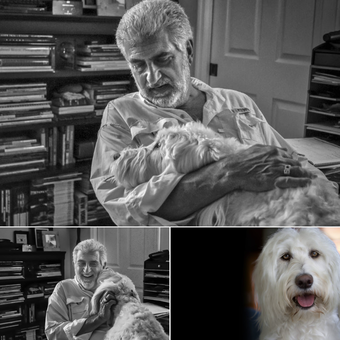 by Skip Cohen I try to keep Friday posts to one concept to give you something to think about over the weekend. I wish today's post was mandatory for every photographer to think about. When I ran yesterday's post about Molly the Wonder Dog, it focused on Throwback Thursday. I posted three black-and-white images captured by "Vanelli" and one by Bambi Cantrell. The three photographs represent some of my most valuable photos. They're memory markers and fit perfectly with author Jodi Picoult's quote above. Here's my point... Take a few minutes and find a couple of your favorite photographs. Then, think about what makes them unique. Most of you underestimate the value of the service you provide to each client. You take shortcuts, sometimes compromise on quality, and don't focus enough on your ability to be a magician. You have the skills to help the world capture memories. You turn the intangible into tangible moments people can hold for a lifetime. As your skillset keeps developing, the goose that laid the golden egg is right in front of you. As a business owner, what could be more valuable to your target audience? Where would the world be without photography? Even closer to home, where would your clients be without your expertise? Now, focus on your mindset the next time you click the shutter! If there was a way you could expand your reach, save money, expand brand awareness and increase revenue, wouldn't you want to know about it? It's time to STOP FLYING SOLO! Coming together is a beginning, staying together is progress, and working together is success! Henry Ford by Skip Cohen
I've written a lot about partnerships over the years, but the timing during the "slow season" gives you the perfect opportunity to build some new relationships and add more strength to old ones. Great partnerships can dramatically reinforce so many different aspects of your business. Yet, so many of you sit there and whine about how tough it is and don't do anything because cash flow is a mess. I get it, but I won't let you fold when you're holding some great cards! Here are eight different opportunities/partnerships to consider:
For those of you who are rolling your eyes and thinking there's nobody to partner with because your specialty is so limited, here's a list to work from. I'm sure there are plenty I've missed because these are all in the portrait/social categories.
It's time to stop thinking you've got to do everything by yourself. Business has changed dramatically, but along with the frustrations, there are some unique opportunities for creative leadership. You don't need to jumpstart your business alone - think about the strategic alliances in your community to rebuild together! by Skip Cohen Last week, I shared several posts about blogging and took a little heat from a few people who believe blogging is a waste of time. Depending on the style of blog, length of posts, etc. they're right in part. However, the issue is about sharing content and being helpful. With or without a blog, "being helpful" should be the foundation for everything you do to build followers. Years ago, I shared content from an article, "How to Write a (Better) Photography Blog Post," by Andy Bondurant. He listed six areas every new and veteran blogger should focus on. The article is no longer active, but here's what I shared that was most on point:
For those of you who don't feel blogging is effective, take that list above and substitute "posting" for blogging. Then, think of each point as it applies to social media, your Facebook page, for example. You need consistency, dedicated time, and a voice in each post that reflects who you are and your passion for the craft. Engage, Enlighten, Encourage and especially... just be yourself.
Social media is a community effort, everyone is an asset. Susan Cooper "But Skip, there's still not enough to write about!" by Skip Cohen
I realize there are plenty of people who believe the days of blogging are long gone, and to a point they're right. But I still believe the most important issue is being relevant to your readership, however you're reaching them, and blogging does help contribute to SEO. So, I'm sharing content topics - they don't have to be used as formal blogs, but could easily morph into posts, reels or sound bites on Facebook for example. My point is trying to give you ideas to keep strengthening your brand as an imaging artist in your community. When somebody tells me there's nothing to write about where they live, they just haven't looked hard enough. There's ALWAYS something going on worth talking about! Here's the last round of content ideas. It's not meant to be all inclusive. Put together with my building blocks from the previous two posts, you've got plenty of content for social media...regardless of how it's delivered.
There are twenty+ content ideas for you to share. Your goal is consistency in sharing great information and building brand awareness as the photography expert in the community. Remember, these give you content to share during those quiet weeks. You still have images to share with things like "365 Projects," client shoots and challenges, and events happening more in real time throughout the week. "But Skip, there's nothing to write about!" by Skip Cohen
I started with your website, and blog basics earlier in the week. Now it's time to move to content ideas. Most of you are sitting on a goldmine of topics, not just for your blog, but other places you're sharing in social media. Sadly, you're often too close to your own business to recognize how much value there is in so many different aspects of your knowledge about imaging. Remember, the key to building readership and followers is all about being helpful. Become the Imaging Expert: As a photographer, you do things you take for granted every day. Let's help Mom, Dad, and the kids become better artists. They're not going open up down the street and compete with you. So, whether they use a conventional camera or a phone, let's help them raise the bar on their images.
There's a very practical advantage to the ideas above - each one allows you to share some of your images as examples of the right and wrong way to capture their memories. You're establishing yourself as the expert in imaging in your community. And to take it a step further, some of you have the skills and ability to hold physical classes and photo walks to help your audience capture better memories. As their skills grow, you become more established as the expert in your community, and you're opening the door for more advanced techniques. At the same time, you're developing top-of-mind awareness of when they need a professional photographer. Coming up tomorrow - another set of ideas for blog topics. There's always something to write about and share!  by Skip Cohen It's funny how January rolls around and so many of you put the brakes on, thinking you can just kick back and chill for a few weeks. I'm not questioning business owners needing a break, just the timing if you stop working altogether. It might be the slow season, but "slow" is only about revenue and clients coming through the front door! Right now, things can be as busy as you want them to be when it comes to building a stronger business in the new year. I'm continuing my quest to give you ideas to build a more substantial business and, at the very least, give a few of you a jump start. Next topic up: I want to focus on your blog in the next two building block posts. "Your website is about what you sell. Your blog is about what's in your heart." Here are some great tips on building a blog. While I'd love to take credit for all of them, many of them are thanks to my good buddy Scott Bourne. They apply not only to maintaining a blog but also to any place you're trying to build readership and followers.
And there they are, ten tips to help you build a blog that draws in readers. But a blog alone isn't enough. You need to weave a web around your readers so they're finding you in multiple locations. It's all about building a more recognized brand, starting with being helpful to your followers. Check in tomorrow for thirty content ideas to write about!  by Skip Cohen For close to fifteen years on three different blogs, I've been sharing ideas to help you build a stronger business. While technology has never slowed down, there's not a lot left that I haven't written about when it comes to marketing. Yet there are so many of you who act like procrastination is a strategy! Too many of you are flying by the seat of your pants, being reactionary, with no planning or strategy for the new year. You wouldn't get in your car for a trip across the country without a bit of planning, including the route, cities you wanted to visit, accommodations, etc., Yet you're attacking the new year without a roadmap. I'm bringing back an updated building block series because NOW is the time to lay the foundation to make 2024 your best year yet. Let's start with your website:
We're in a "you snooze - you lose" scenario. We might be in the slow season, but it shouldn't be slow for you as a business owner. Valentine's Day, Easter, prom season, Mother's Day, Father's Day, and graduation are all around the corner. This is the first Marketing Monday for this series - coming up we'll hit at least seven more topics to help you build a powerhouse business in the new year...but remember, even with great marketing, you still need an outstanding skill set when a camera is in your hands! by Skip Cohen
At the last minute yesterday, I decided to head to IUSA next weekend. I keep in touch with dozens of photographers weekly, and I felt free of the need to be in Louisville for the convention. But the closer it got to the show, the more I questioned my decision. So often, I forget to practice what I preach. In this case, I need to recharge my battery when it comes to imaging. With a home office and most interaction online, there is no replacement for being together with other photographers, vendors, and friends. My anticipation is almost overwhelming! Just the decision to be at IUSA has created some great energy. So, if you're like me and had decided not to attend, I was surprised that I could lock in decent flights and the hotel this late. Why IUSA? Well, it's the first big show of the new year for most of you. Next, you need to spend time building your network, and there's no better place than a great convention. With nearly 150 exhibitors, it's an opportunity to check out new products, services, and technology. Plus, PPA's educational platform this year is one of their best yet - it's a chance for you to fine-tune your skill set. Here are just a few reminders if you're heading to the show.
I'd love to catch up with any of you headed to the show - look for me at the Platypod booth 1226, Marathon booth 727 or just out and about on the trade show floor. |
Our Partners"Why?"Check out "Why?" one of the most popular features on the SCU Blog. It's a very simple concept - one image, one artist and one short sound bite. Each artist shares what makes the image one of their most favorite. We're over 100 artists featured since the project started. Click on the link above and you can scroll through all of the episodes to date.
Categories
All
|
© 2019 Skip Cohen University



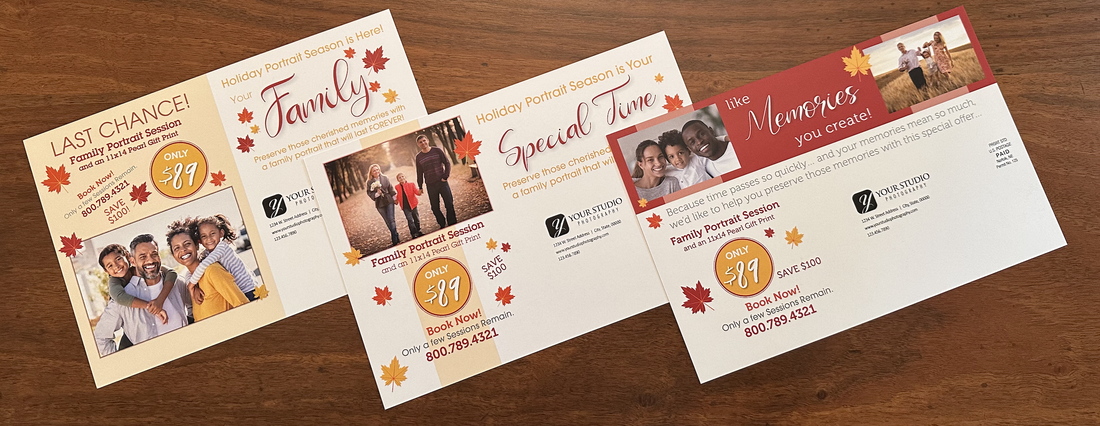
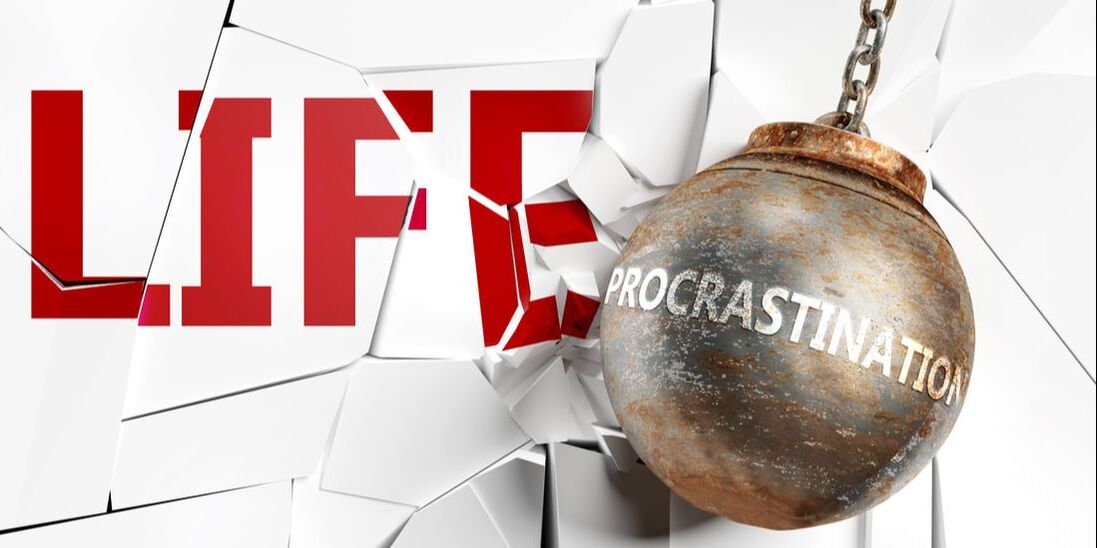

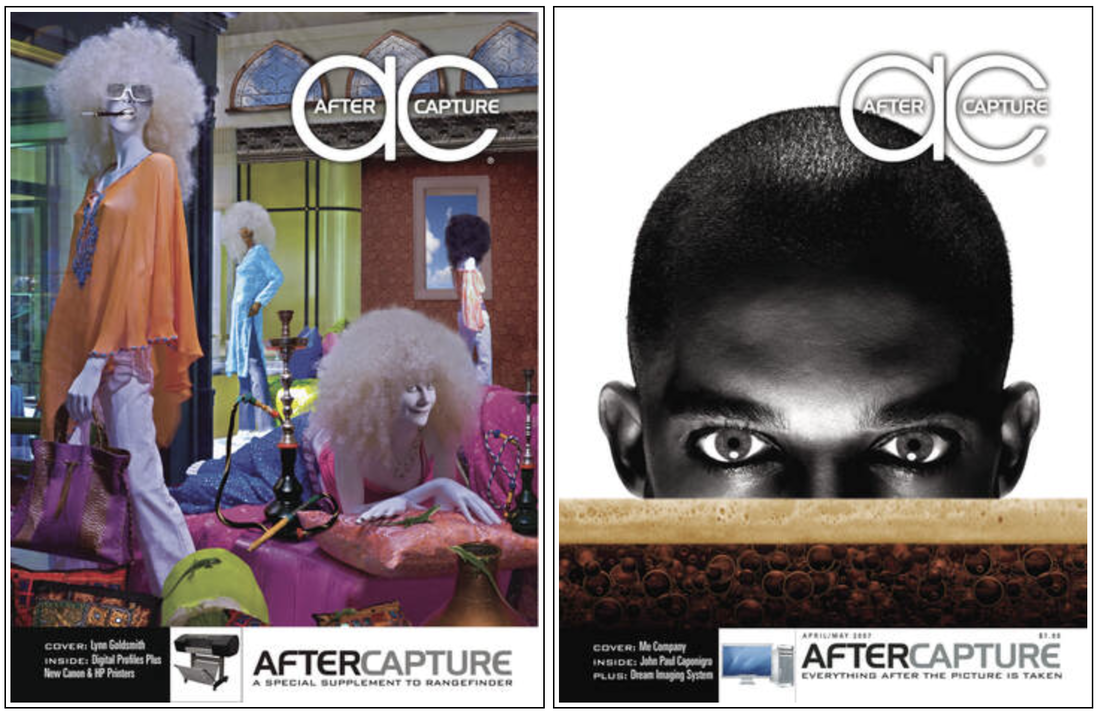
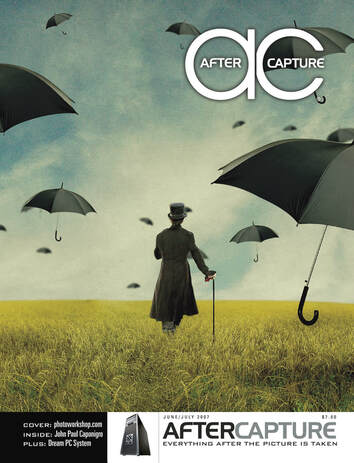





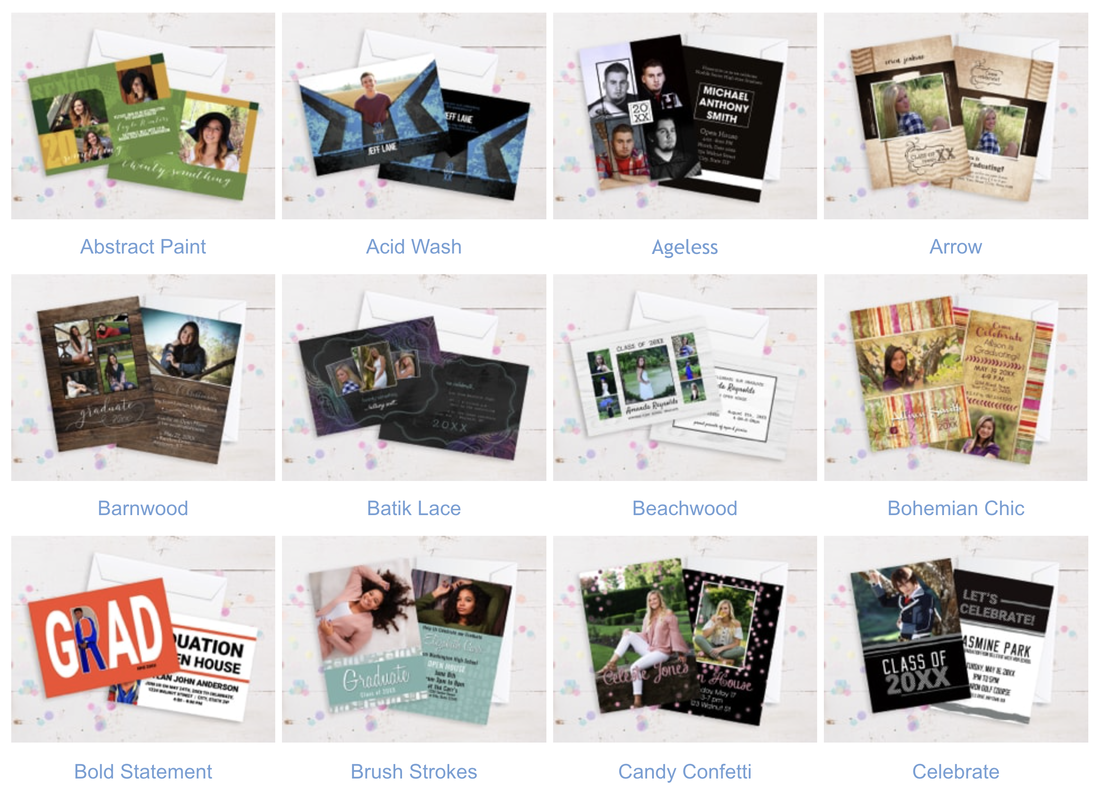


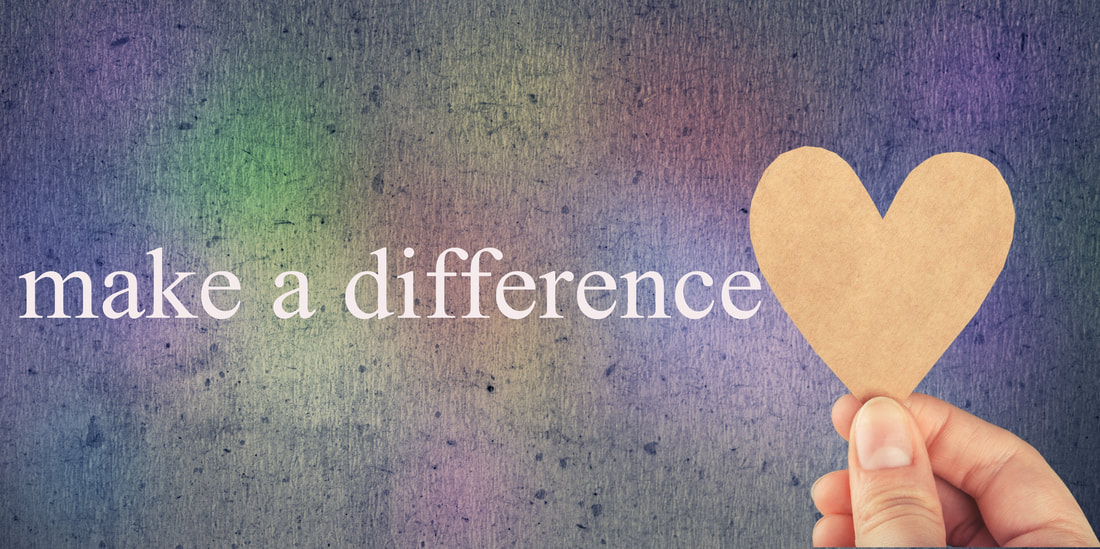











 RSS Feed
RSS Feed

